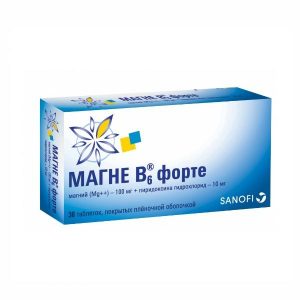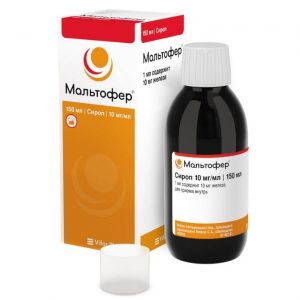Description
Release form
Film-coated tablets.
Indications
Folic acid deficiency.
Prevention of the development of neural tube defects in the fetus in the first trimester of pregnancy.
Contraindications
Hypersensitivity to the components that make up pernicious anemia, malignant neoplasms, cobalamin deficiency, childhood.
Use during pregnancy and lactation
Folic acid is necessary during the preparation for pregnancy (1-3 months before the planned pregnancy) and in the first few weeks after conception (I trimester).
Special instructions
For the prevention of hypovitaminosis, a balanced diet is most preferred. Foods rich in folic acid – green vegetables (salad, spinach, tomatoes, carrots), fresh liver, legumes, beets, eggs, cheese, nuts, cereals.
Folic acid is not used to treat B12-deficient (pernicious), normocytic and aplastic anemia, as well as refractory anemia for therapy. With pernicious (B12-deficient) anemia, folic acid, improving hematological parameters, masks neurological complications. While pernicious anemia is not ruled out, the administration of folic acid in doses exceeding 100 mcg / day is not recommended (with the exception of pregnancy and lactation).
It should be borne in mind that patients those on hemodialysis need increased amounts of folic acid.
During treatment, antacids should be used 2 hours after taking folic acid, colestyramine 4-6 hours before or 1 hour after taking folic acid. It should be borne in mind that antibiotics can distort (give knowingly low indicators) the results of a microbiological assessment of the concentration of folic acid in plasma and red blood cells.
When using large doses of folic acid, as well as therapy for a long period, a decrease in the concentration of vitamin B12 is possible.
Composition
1 tablet contains:
Active ingredient:
folic acid – 0.0004 g
Excipients:
lactose monohydrate – 0.0936 g,
silicon dioxide colloidal – 0.0005 gp, srdlp g,
magnesium stearate – 0.0005 g.
Shell:
Opadry II 85F22233 – 0.0030 g: polyvinyl alcohol, partially hydrolyzed – 40.00%, macrogol – 20.20%, talc – 14.80%, titanium dioxide E 171 – 19.50%, yellow iron oxide dye E 172 – 0.10%, aluminum varnish based on quinoline dye yellow E 104 – 5.40%.
Dosage and administration
Applied orally after a meal.
With a deficiency of folic acid – 400 mcg (1 tablet) per day.
To prevent the development of neural tube defects in the fetus in the first trimester of pregnancy – 400 mcg – 800 mcg (1 – 2 tablets).
Side effects
Allergic reactions (skin rash, itching, bronchospasm, erythema, hyperthermia) from the gastrointestinal tract: nausea, bloating, bitterness in the mouth, anorexia.
With prolonged use, the development of B12 hypovitaminosis is possible.
Drug Interactions
Reduces the effectiveness of phenytoin (requires an increase in its dose).
Analgesics (long-term therapy), anticonvulsants (including phenytoin and carbamazepine). Estrogens, oral contraceptives increase the need for folic acid. Antacids, colestyramine, sulfonamines (including sulfasalazine) reduce the absorption of folic acid.
Methotrexate, pyrimethamine, triamteren, trimethoprim inhibit dihydrofolate reductase and reduce the effect of folic acid (calcium folinate should be prescribed instead for patients using these drugs). With simultaneous use with chloramphenicol, neomycin, polymyxins, tetracyclines, the absorption of folic acid is reduced.
Overdose
May occur with prolonged use (more than 1-2 months) of folic acid in doses of more than 1000 micrograms per day and as a result of combined use with vitamin and mineral complexes.
Storage Conditions
The product should be stored in a dry, dark place inaccessible to children at a temperature not exceeding 25 ° C.
The Expiration of
is 3 years.
Active substance
Folate
Conditions of sale from
pharmacies Without a prescription
lekarstvennaja form
tablets



